The Cornell Lab Bird Academy › Discussion Groups › Nature Journaling and Field Sketching › Focusing on Your Subject – Blind Contour Drawing
-
In general, I want to try to spend more time looking at the subject than the journal page, so this was a nice exercise to reinforce that habit. What I liked best was finding the angles of the negative space around the various subjects and observing that and trying to make the mark on the page with confidence.
-
 I do think contour drawing helped me stay completely focused on the subject, but I had no sense of where my hand was on the page or where the beginning of the drawing actually was. Because it is so cold outside, I sketched a birch tree. Again, I was unsure of where the drawing had actually begun but the overall shape wasn’t as bad as I thought it would be.
I do think contour drawing helped me stay completely focused on the subject, but I had no sense of where my hand was on the page or where the beginning of the drawing actually was. Because it is so cold outside, I sketched a birch tree. Again, I was unsure of where the drawing had actually begun but the overall shape wasn’t as bad as I thought it would be.

-
Definitely helped me stay focused. My mind drifted even after a short period demonstrating my lack of focus which I need to improve. Good exercise. I learned much especially that I can actually capture some parts without looking at the paper!
-
This was a lot of fun. I didn't go outside because it was freezing out, but did the given examples a couple of times each - not perfect but I liked the way worked - I did add the branch and eye of the bird post-exercise...I also did it in my regular notebook because I thought it would be a waste of paper - but it was not.

-
After doing these exercises, it was apparent to me that steady and SLOW is the key.
 This morning I took more time to do the blind contour and I think it's a noticeable improvement.
This morning I took more time to do the blind contour and I think it's a noticeable improvement. 

-
 Blind Contour of a Succulent. I like how focused I felt during the exercise
Blind Contour of a Succulent. I like how focused I felt during the exercise -
 ??????????????????????????????????????????????????????????????????????????????????????????:):):)
??????????????????????????????????????????????????????????????????????????????????????????:):):) -
 I had a lot of fun!!
I had a lot of fun!! -
I must say I produced some very abstract art here :-). But I will keep trying!
-
This exercise was more successful than I anticipated. I found that I make somewhat fatter bodies than the pictures. Being aware of this is very helpful.
-
I thought it was a piece of cake..haha..and the results are pretty funny!

-
Very difficult. All my contour drawings looked like amoebas and never really improved. It did help me stay focused.
-
Wow! That was different and quit difficult. My first two were barely recognizable, the nest two MIGHT you might have been able to ID? Great exercise however and I was able to pick out something that made me say "oh, that looks a little like that part of the original" Very cool. Thanks.
-
 I really love this technique. It is very fun and is helping me so much. This is actually my best one.
I really love this technique. It is very fun and is helping me so much. This is actually my best one.
-
that is so pretty
-
Questions: Why does my pencil speed change? Should I move my arm or my hand? Does peripheral vision of the drawing affect the outcome? Does keeping the notebook firmly planted on a tabletop help?

-
I'm having trouble believing that some of the posted images I'm seeing here were done blindly. This was, and I'm really enjoying this exercise! Eye-hand coordination has always been my issue, and I've learned that it improves with practice and training. So this is a very good exercise for me. I also learned this time, as I'm left-handed, to start on the right. And yes, focusing on the subject really helped get the essentials right, even if the drawing turned out awry. Practice makes perfect!

-
Not bad at all!
-
-
As part of this section I am practicing sketching using my Sibley field guide in an effort to get shape and color, also objects from around my location outdoors.


-
those drawings are Beautifull
-
-
I have enjoyed this section. I attempt the blind contour sketch and then attempt an eyes open sketch. I follow this with lots of questions and then research the answer. So far I have done the Easter
 n red newt and the Green-tailed sunbird. I found it very difficult to get the colors correct on the bird.
n red newt and the Green-tailed sunbird. I found it very difficult to get the colors correct on the bird. -
I found this to be so valuable! My final sketch already was a lot better than my first. I can see how practicing this would help train my brain to "talk" to my sketching hand in a better way. I plan on continuing to play with this technique.
-
This was an interesting exercise. I found that not looking at all really helped me focus on the small details in contours. However, I found checking in a key points to see if I was close to where I was supposed to be helped me to both focus on the subtle details and complete the image.


-

-
 I found this interesting. Yes, it did make me focus completely on my subject. The drawings were not as off- base as I thought they would’ve been. I’m so enjoying this class. It’s such a great opportunity to really learn HOW to nature journal. Liz is such a fabulous instructor. She’s so encouraging!
I found this interesting. Yes, it did make me focus completely on my subject. The drawings were not as off- base as I thought they would’ve been. I’m so enjoying this class. It’s such a great opportunity to really learn HOW to nature journal. Liz is such a fabulous instructor. She’s so encouraging! -
I can see that these warm up activities can help me get comfortable. Each session should start with some warm ups.

-
 I recognize the value of such exercises, even though it's humiliating to be so off mark! I'm amazed how close many of the rest of you were in your drawings.
I recognize the value of such exercises, even though it's humiliating to be so off mark! I'm amazed how close many of the rest of you were in your drawings. -
I have done this exercise before in a live drawing class. The instructor spent half an hour roaming the studio reminding us to absolutely, positively not look at our drawings while we were doing them. Virtually the entire class needed to be "reminded" of this several times throughout the session. I'm not making any assumptions about anyone else, but I will speak for myself and say that it I find it virtually impossible to do a blind drawing where the line ends exactly where it is supposed to. As a reference, I've attached a recent drawing I did of some fish vertebrae I found on the beach and my "newt."

-
-
 I liked this exercise. I remember learning to draw in elementary school using a similar method and I remember using this to draw maps way back in the "old days". I think I did better on the Bird of Paradise than the animals. I wonder if this had to do with not having a "picture" in my brain of what this flower looks like. I know what a bird and a lizard look like and wonder if my brain was able to follow my eye better because I wasn't competing with an image stored in visual memory already. Hmmm...
I liked this exercise. I remember learning to draw in elementary school using a similar method and I remember using this to draw maps way back in the "old days". I think I did better on the Bird of Paradise than the animals. I wonder if this had to do with not having a "picture" in my brain of what this flower looks like. I know what a bird and a lizard look like and wonder if my brain was able to follow my eye better because I wasn't competing with an image stored in visual memory already. Hmmm...
Read More:
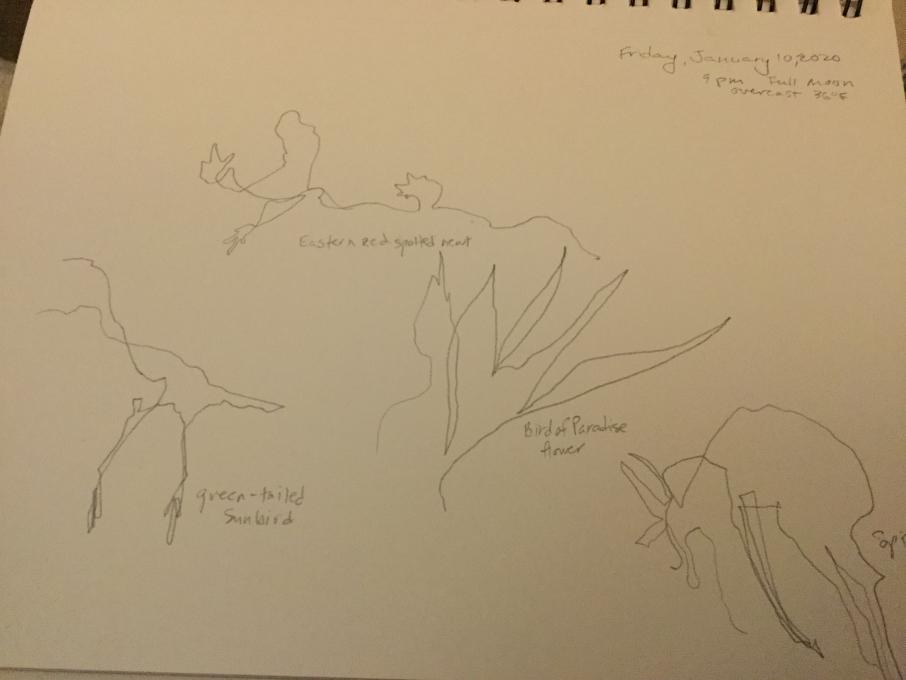 I do think contour drawing helped me stay completely focused on the subject, but I had no sense of where my hand was on the page or where the beginning of the drawing actually was. Because it is so cold outside, I sketched a birch tree. Again, I was unsure of where the drawing had actually begun but the overall shape wasn’t as bad as I thought it would be.
I do think contour drawing helped me stay completely focused on the subject, but I had no sense of where my hand was on the page or where the beginning of the drawing actually was. Because it is so cold outside, I sketched a birch tree. Again, I was unsure of where the drawing had actually begun but the overall shape wasn’t as bad as I thought it would be.

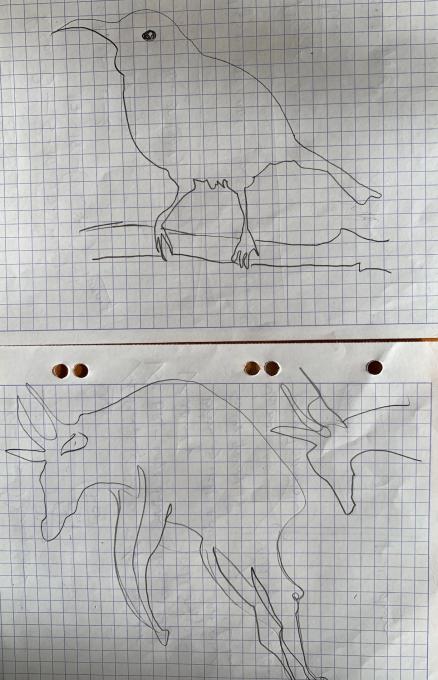
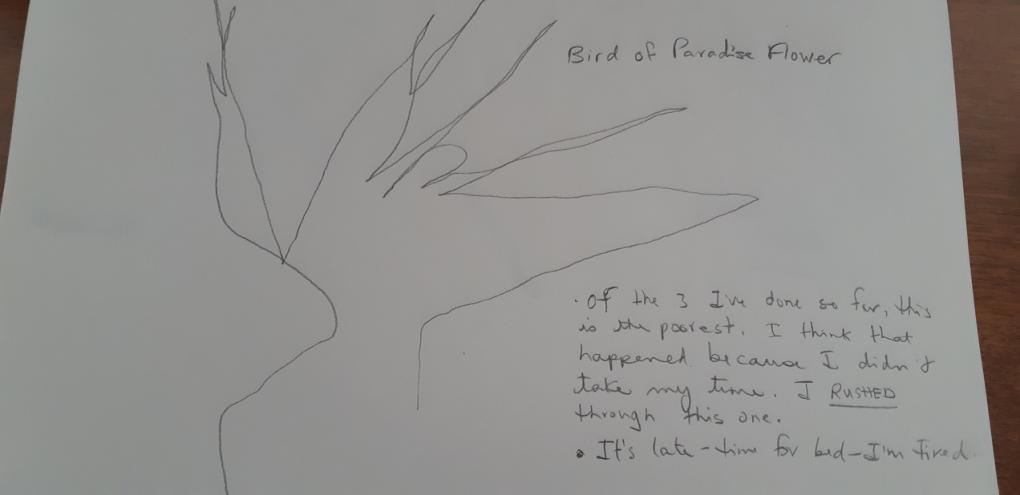 This morning I took more time to do the blind contour and I think it's a noticeable improvement.
This morning I took more time to do the blind contour and I think it's a noticeable improvement. 
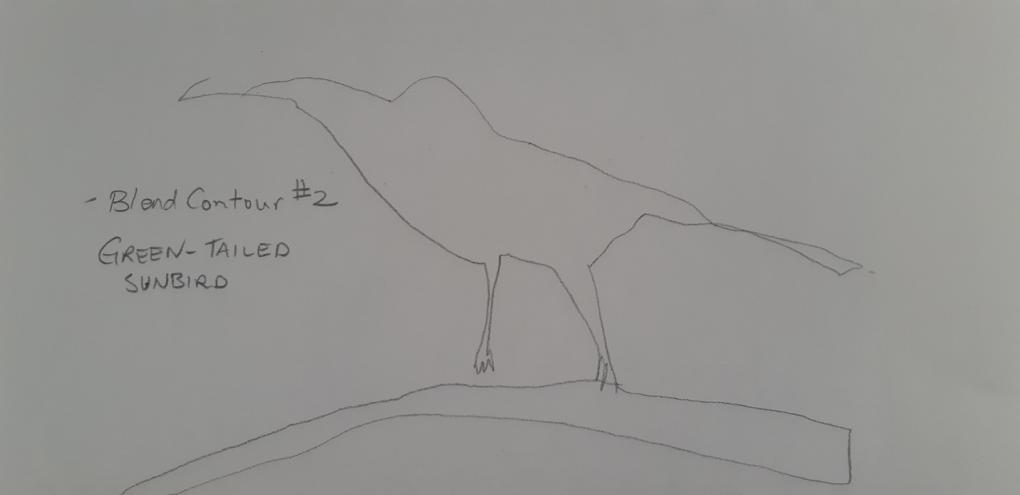
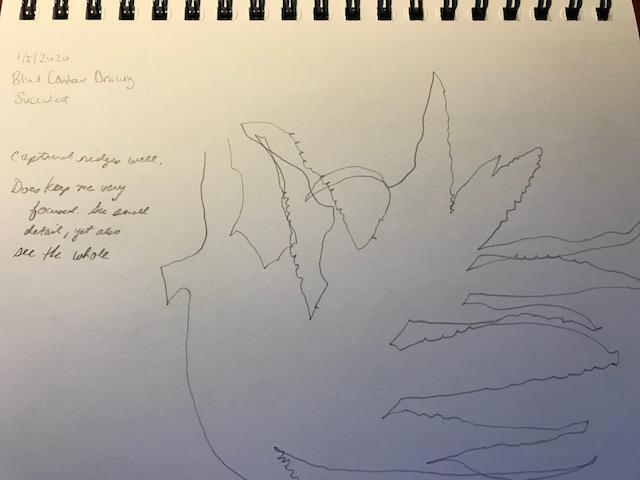 Blind Contour of a Succulent. I like how focused I felt during the exercise
Blind Contour of a Succulent. I like how focused I felt during the exercise 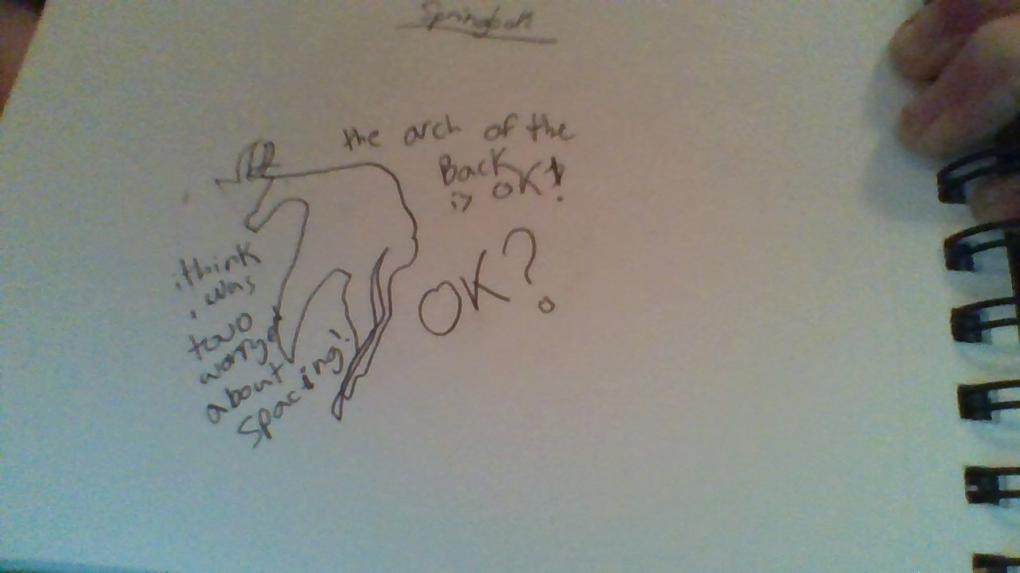 ??????????????????????????????????????????????????????????????????????????????????????????:):):)
??????????????????????????????????????????????????????????????????????????????????????????:):):) 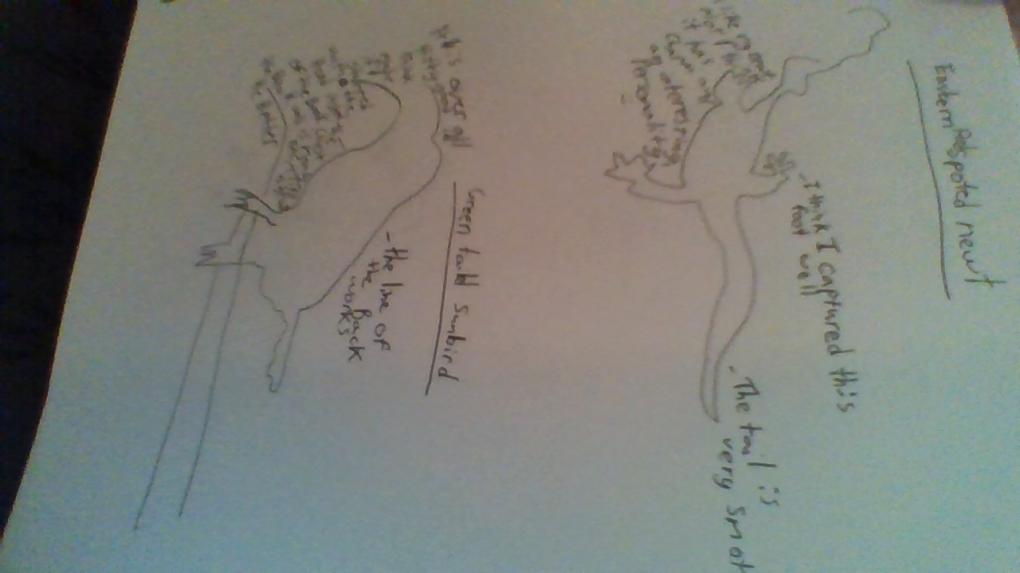 I had a lot of fun!!
I had a lot of fun!! 
 I really love this technique. It is very fun and is helping me so much. This is actually my best one.
I really love this technique. It is very fun and is helping me so much. This is actually my best one.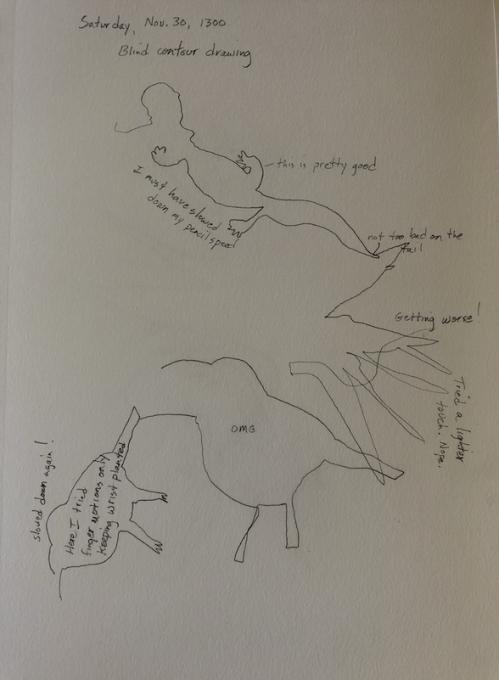

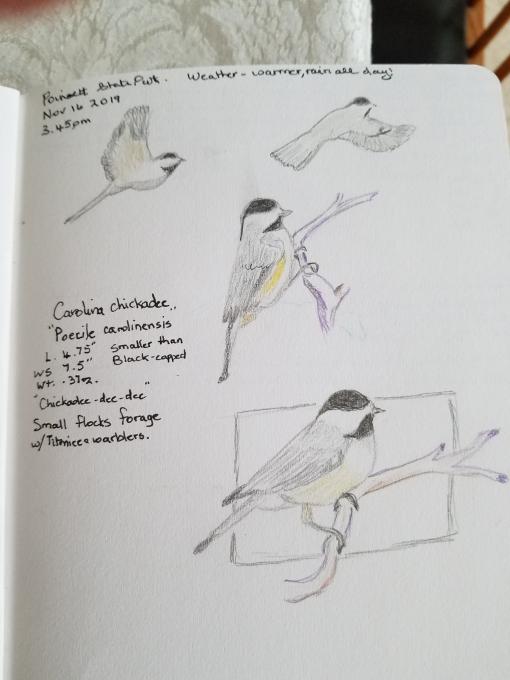

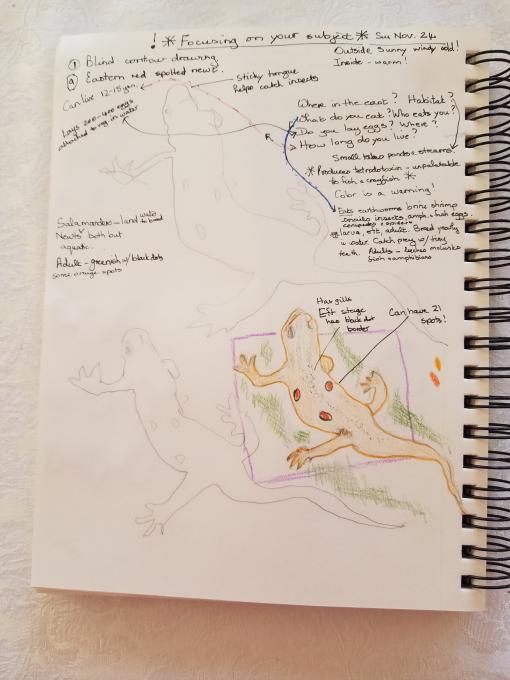 n red newt and the Green-tailed sunbird. I found it very difficult to get the colors correct on the bird.
n red newt and the Green-tailed sunbird. I found it very difficult to get the colors correct on the bird. 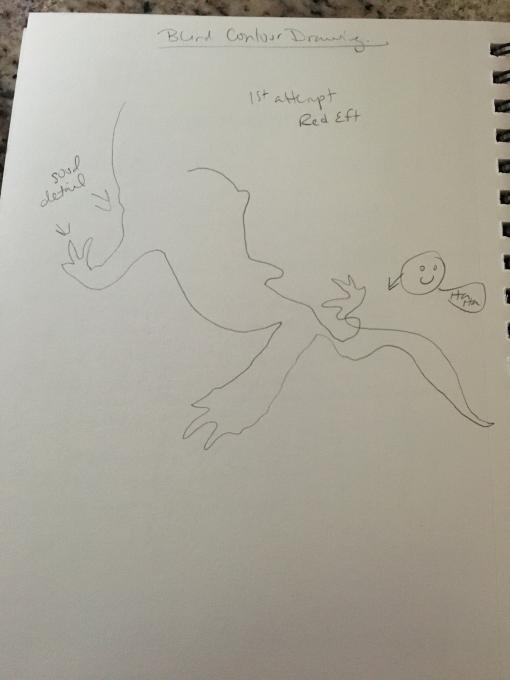
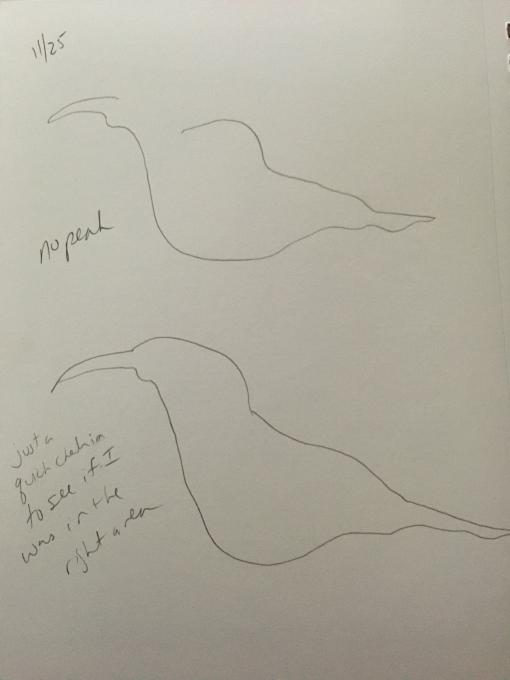
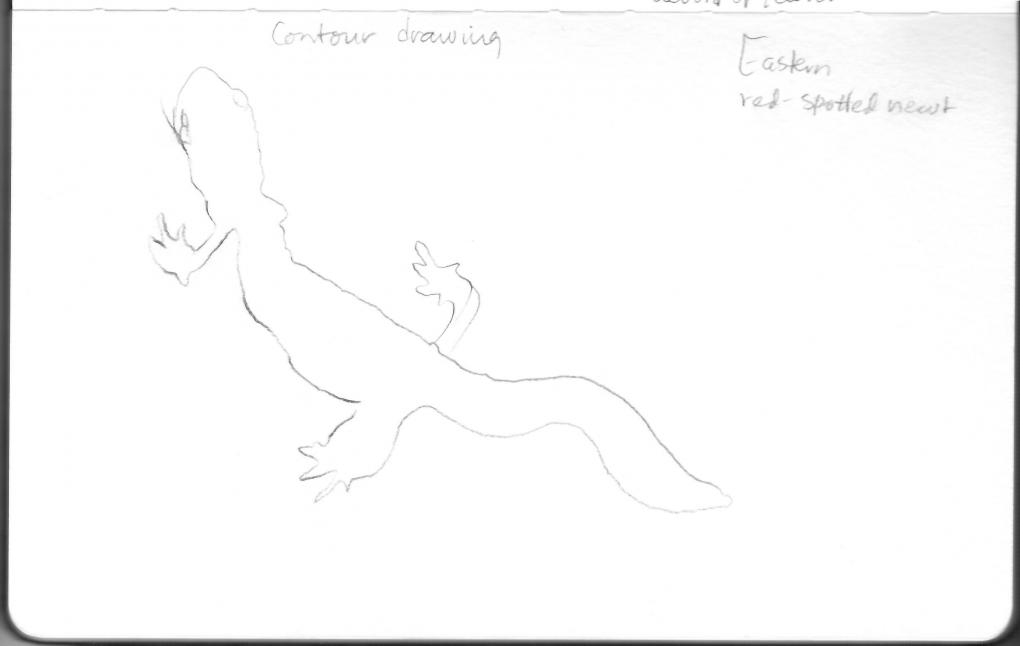
 I found this interesting. Yes, it did make me focus completely on my subject. The drawings were not as off- base as I thought they would’ve been. I’m so enjoying this class. It’s such a great opportunity to really learn HOW to nature journal. Liz is such a fabulous instructor. She’s so encouraging!
I found this interesting. Yes, it did make me focus completely on my subject. The drawings were not as off- base as I thought they would’ve been. I’m so enjoying this class. It’s such a great opportunity to really learn HOW to nature journal. Liz is such a fabulous instructor. She’s so encouraging! 
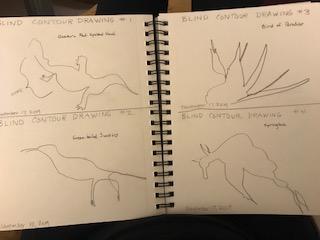 I recognize the value of such exercises, even though it's humiliating to be so off mark! I'm amazed how close many of the rest of you were in your drawings.
I recognize the value of such exercises, even though it's humiliating to be so off mark! I'm amazed how close many of the rest of you were in your drawings. 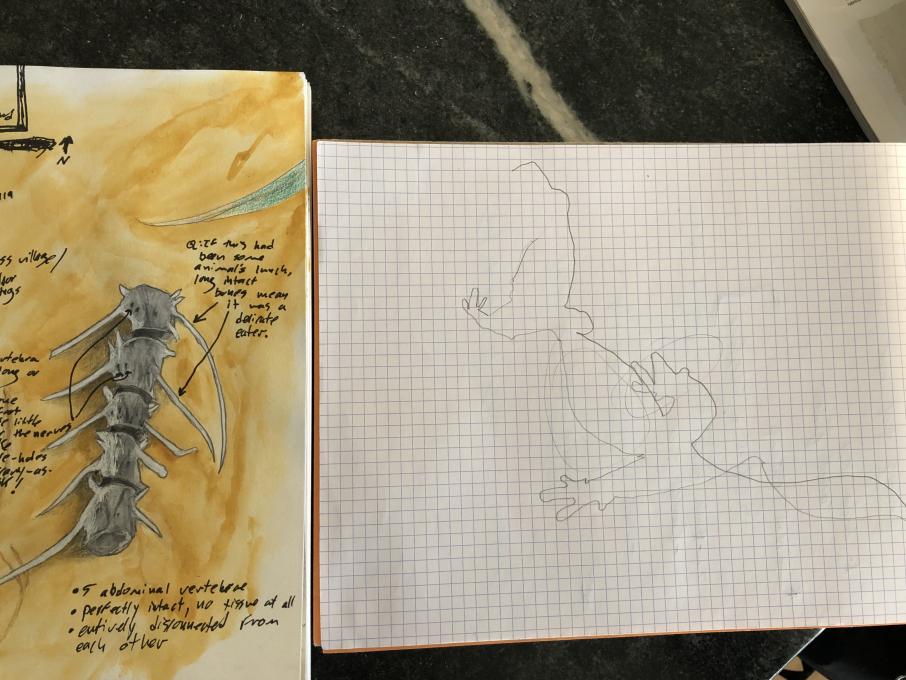
 I liked this exercise. I remember learning to draw in elementary school using a similar method and I remember using this to draw maps way back in the "old days". I think I did better on the Bird of Paradise than the animals. I wonder if this had to do with not having a "picture" in my brain of what this flower looks like. I know what a bird and a lizard look like and wonder if my brain was able to follow my eye better because I wasn't competing with an image stored in visual memory already. Hmmm...
I liked this exercise. I remember learning to draw in elementary school using a similar method and I remember using this to draw maps way back in the "old days". I think I did better on the Bird of Paradise than the animals. I wonder if this had to do with not having a "picture" in my brain of what this flower looks like. I know what a bird and a lizard look like and wonder if my brain was able to follow my eye better because I wasn't competing with an image stored in visual memory already. Hmmm...